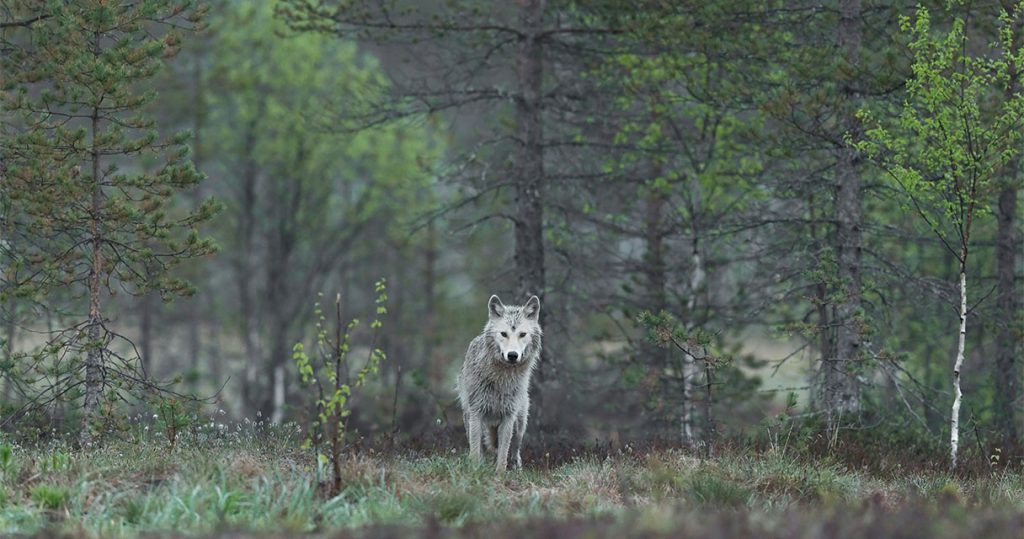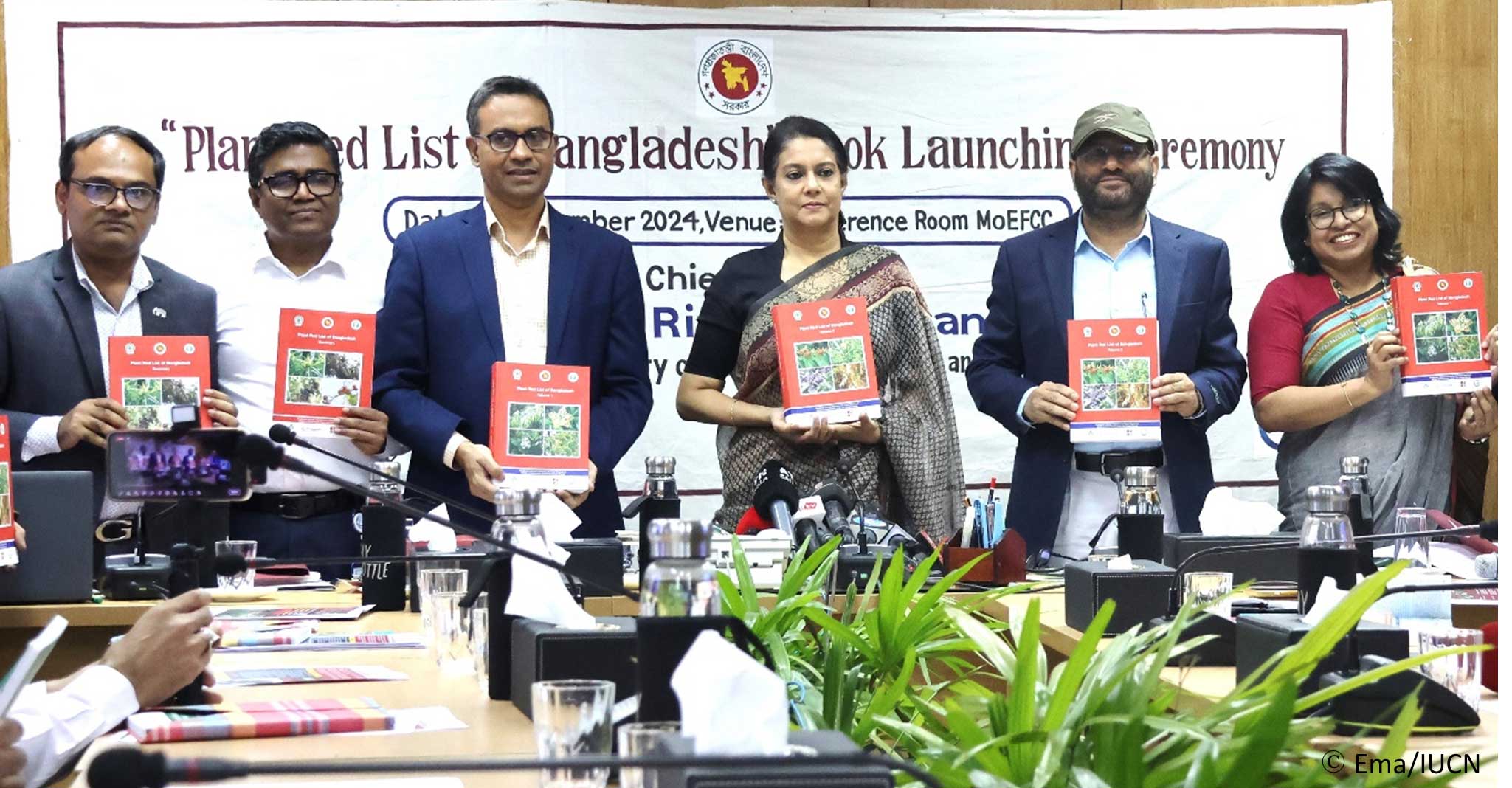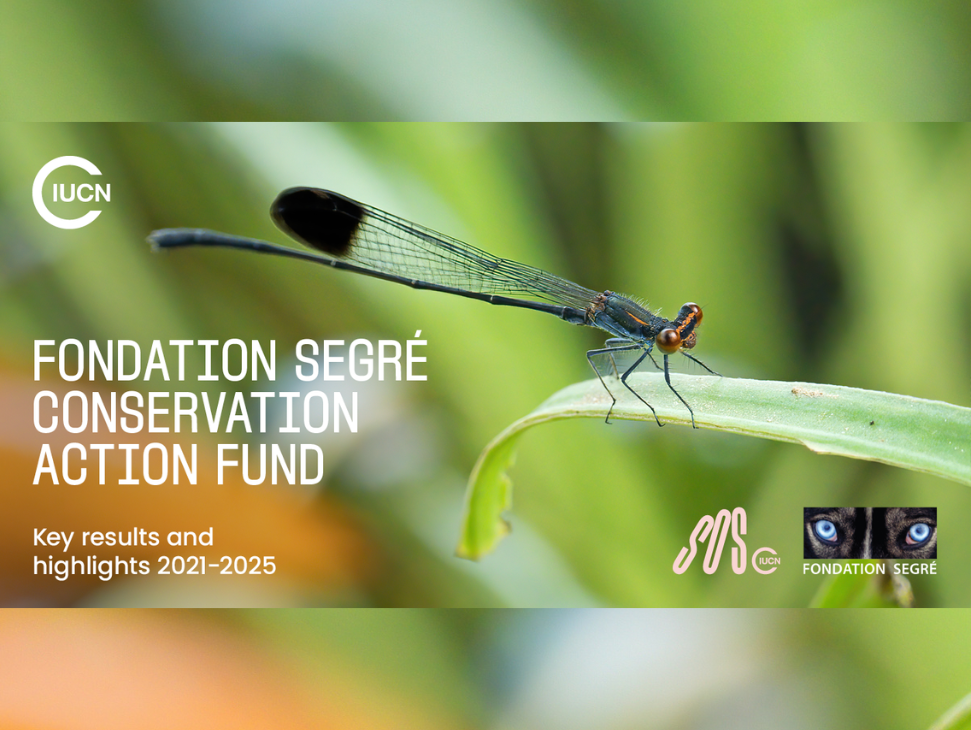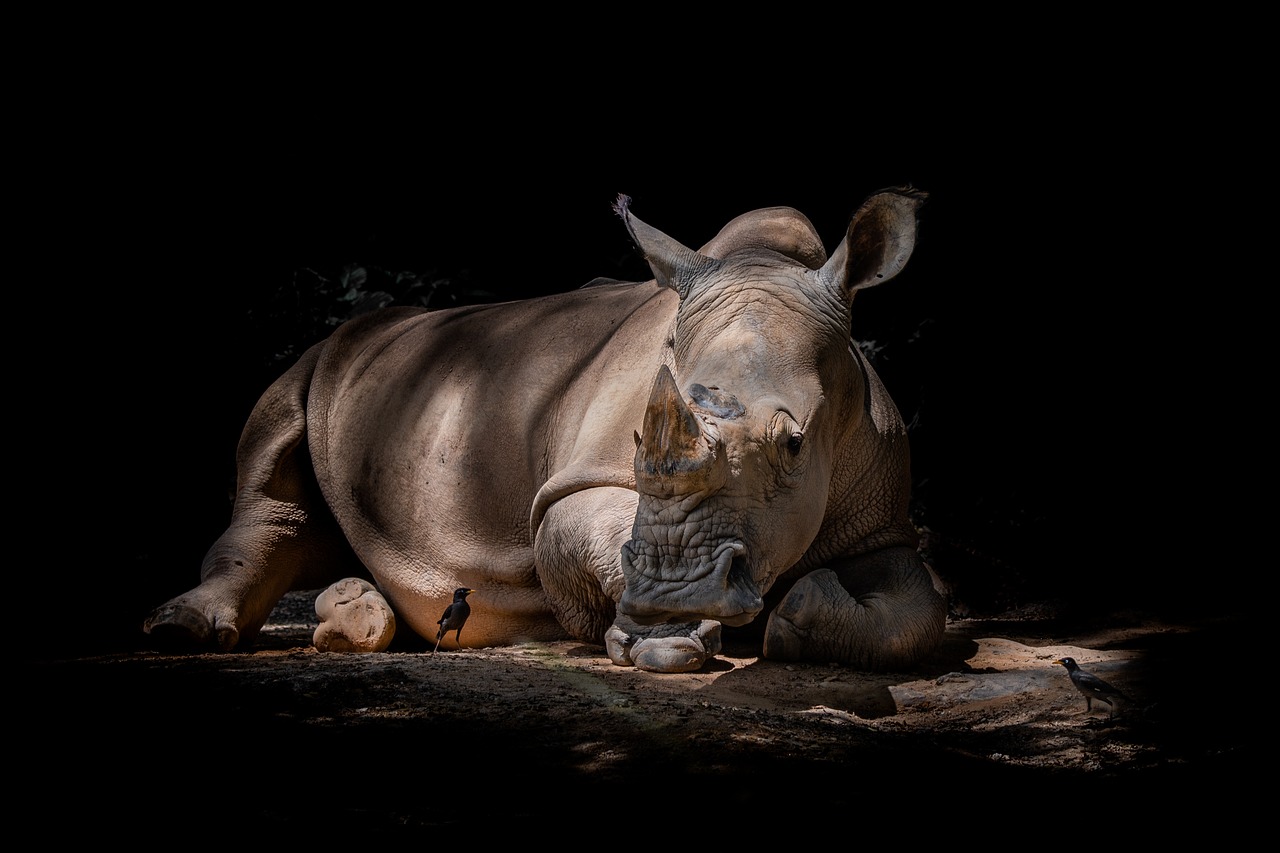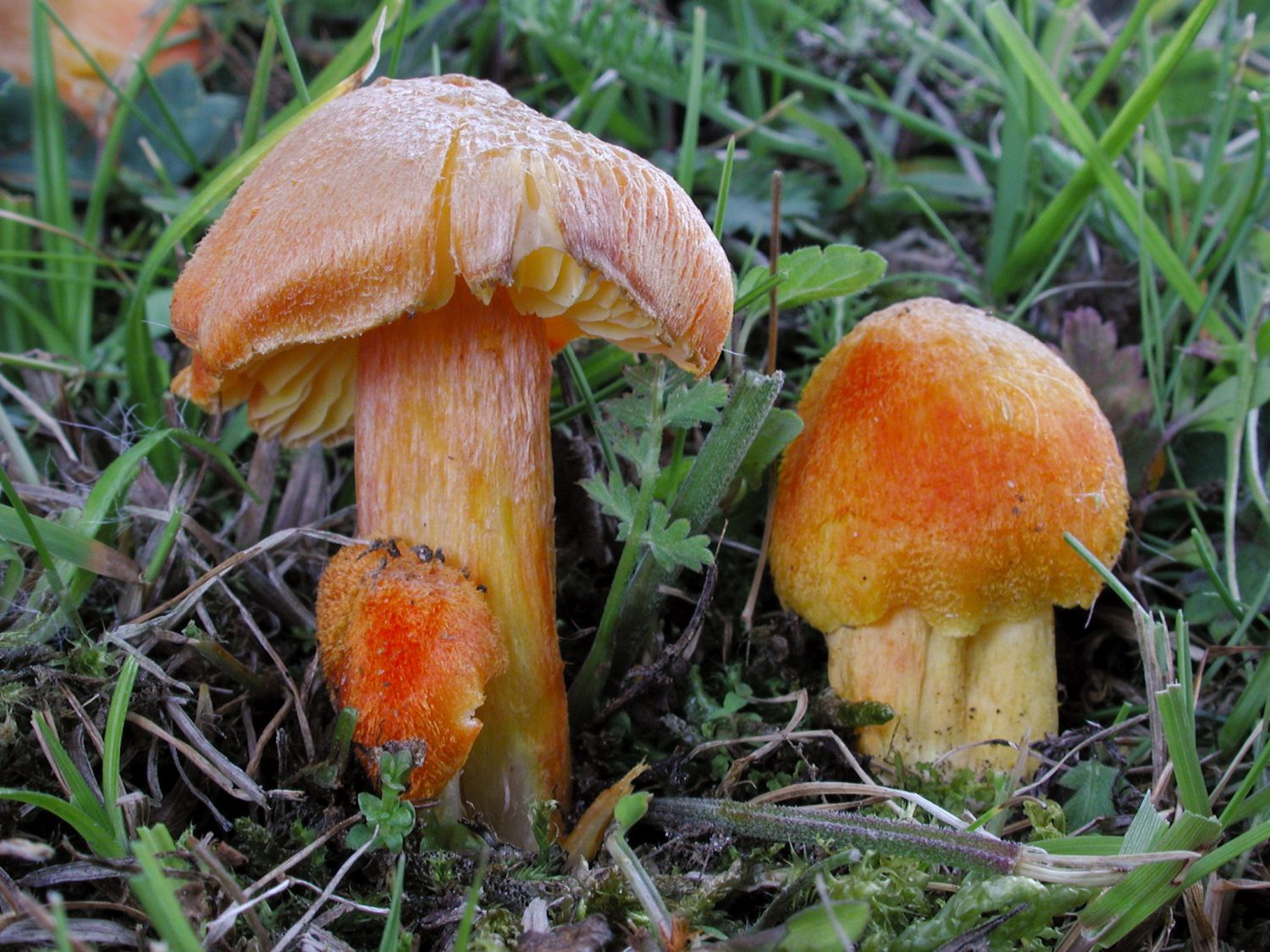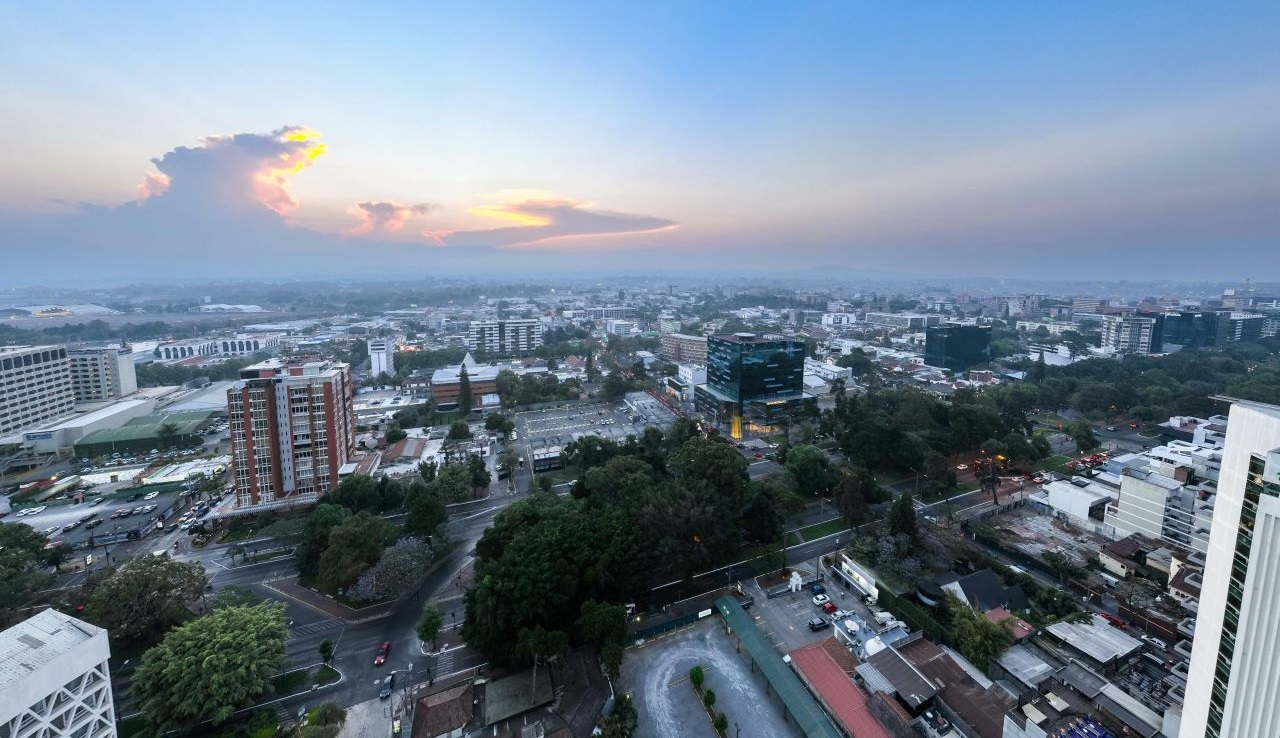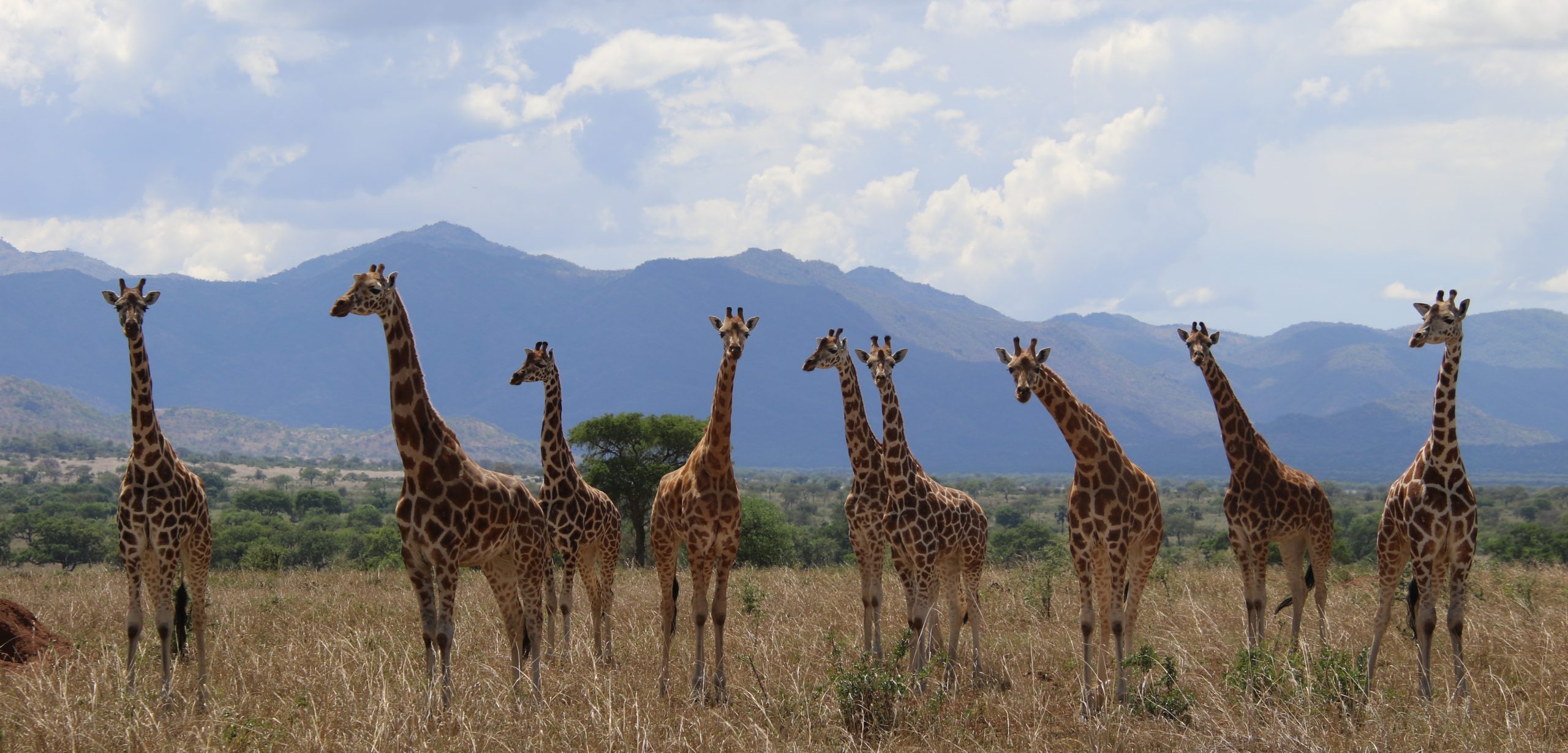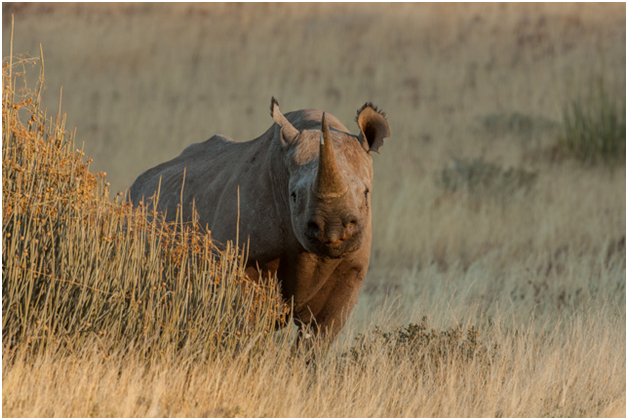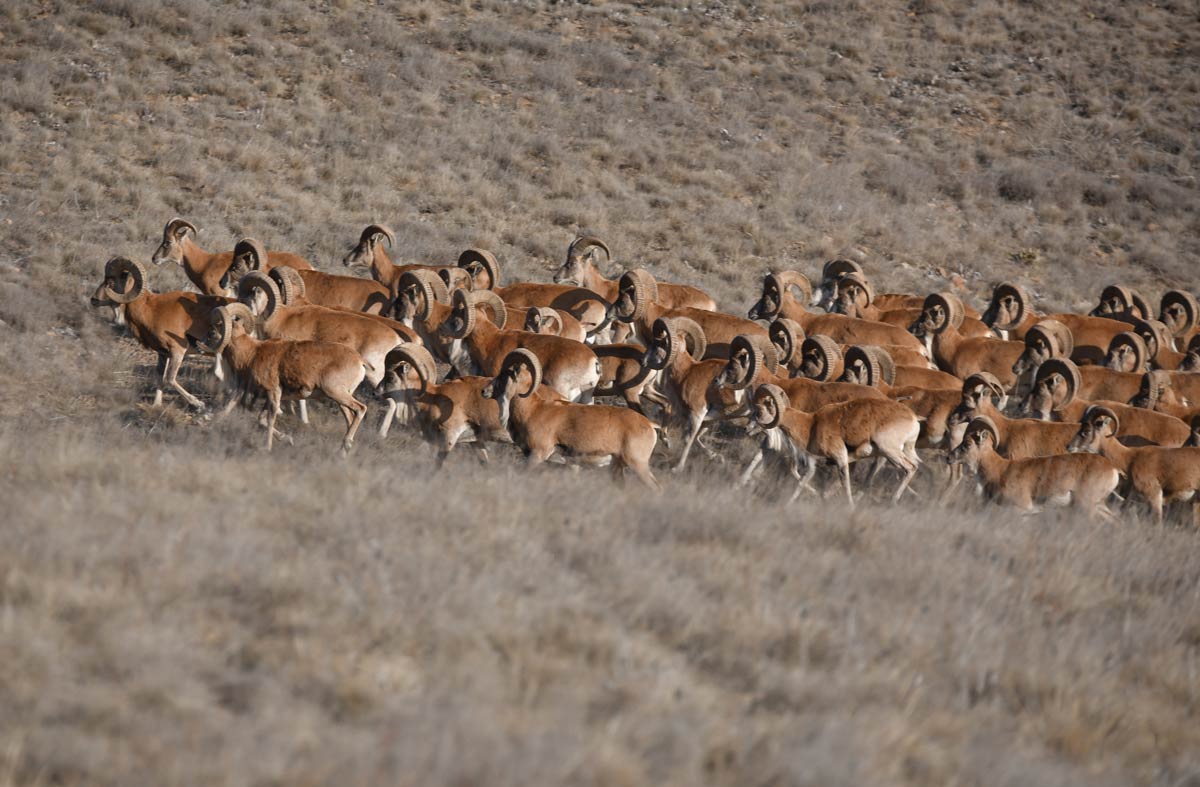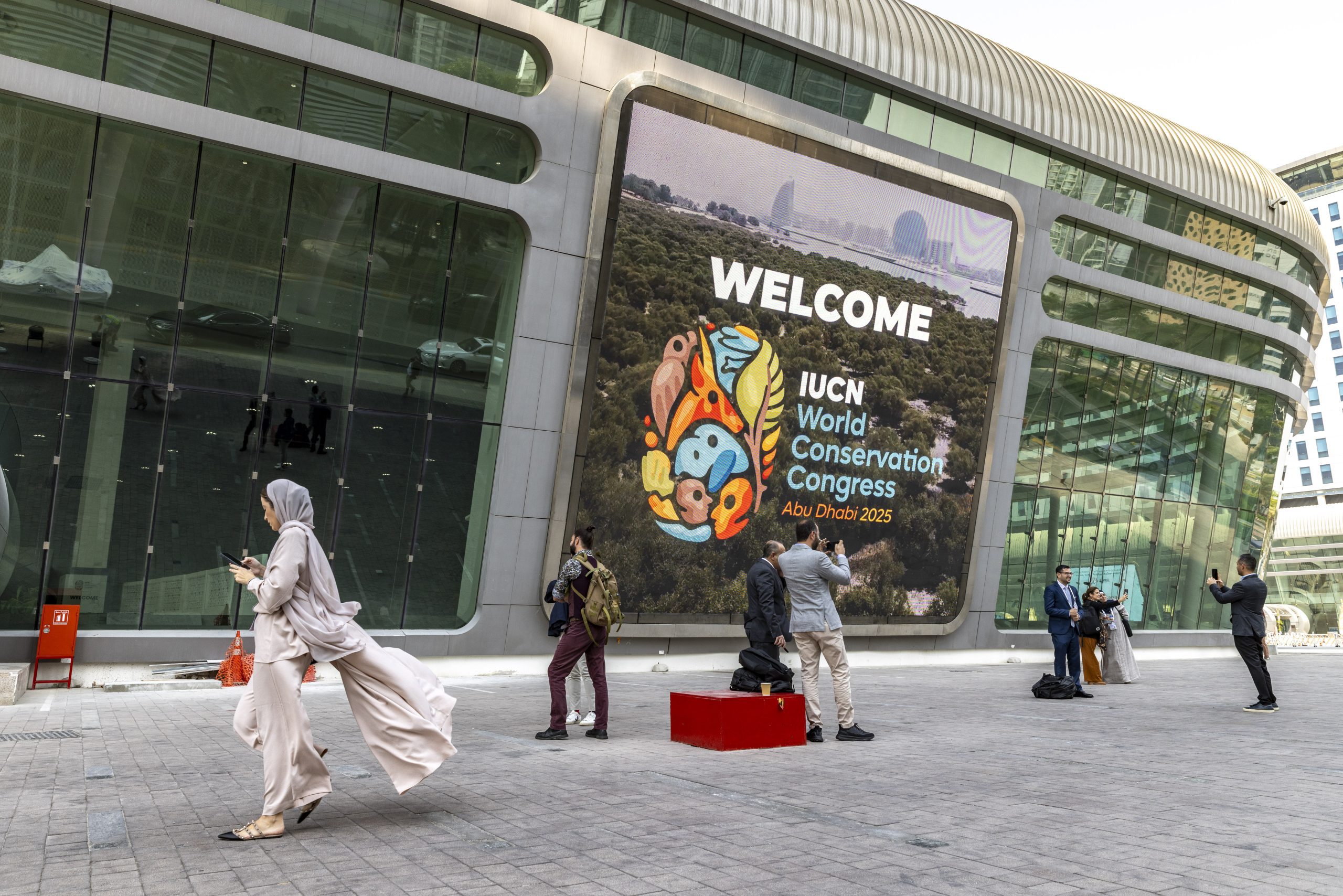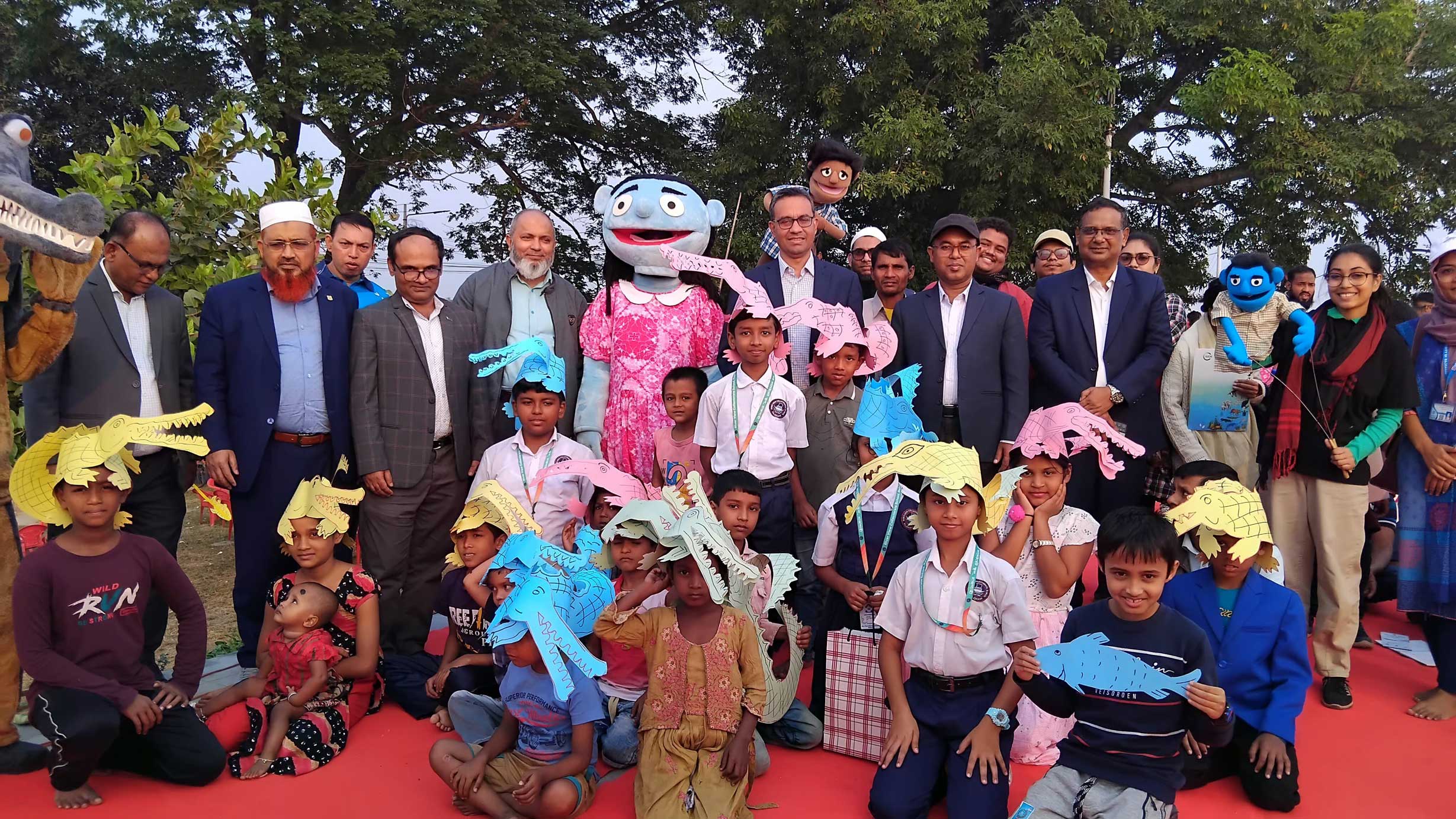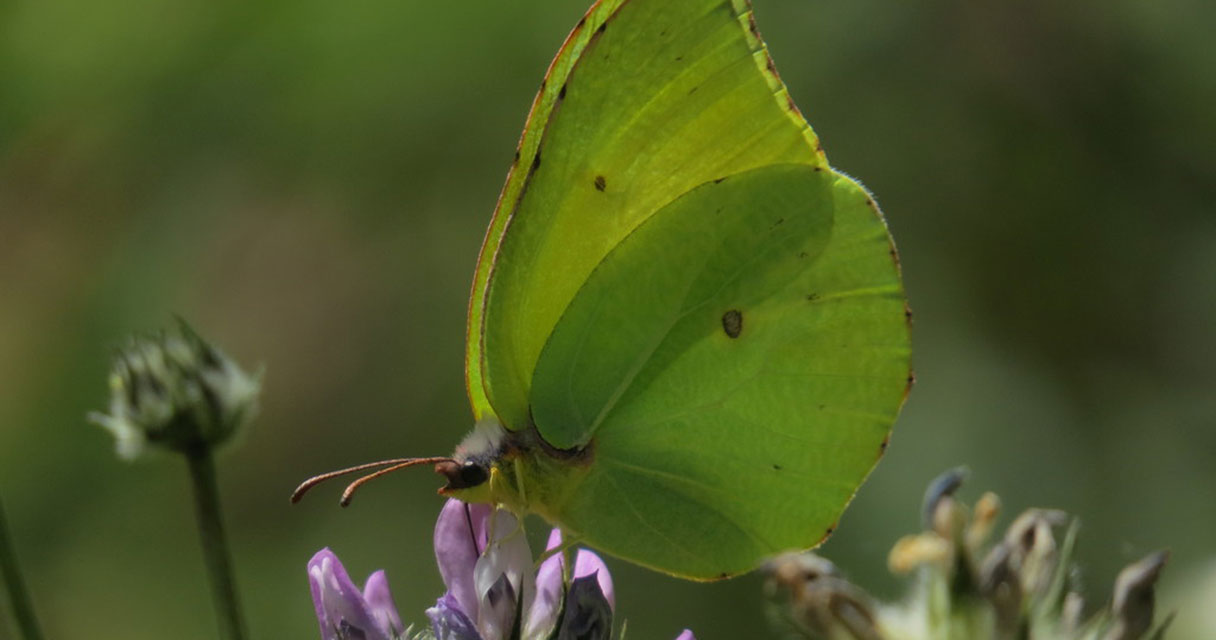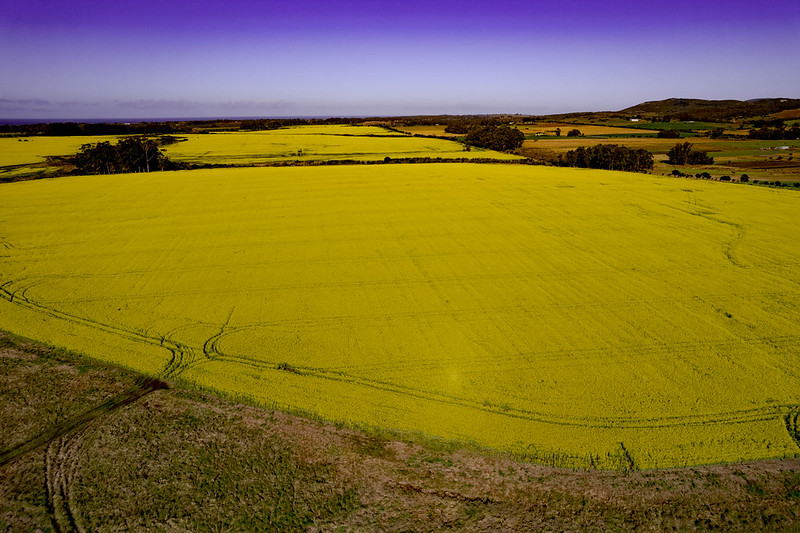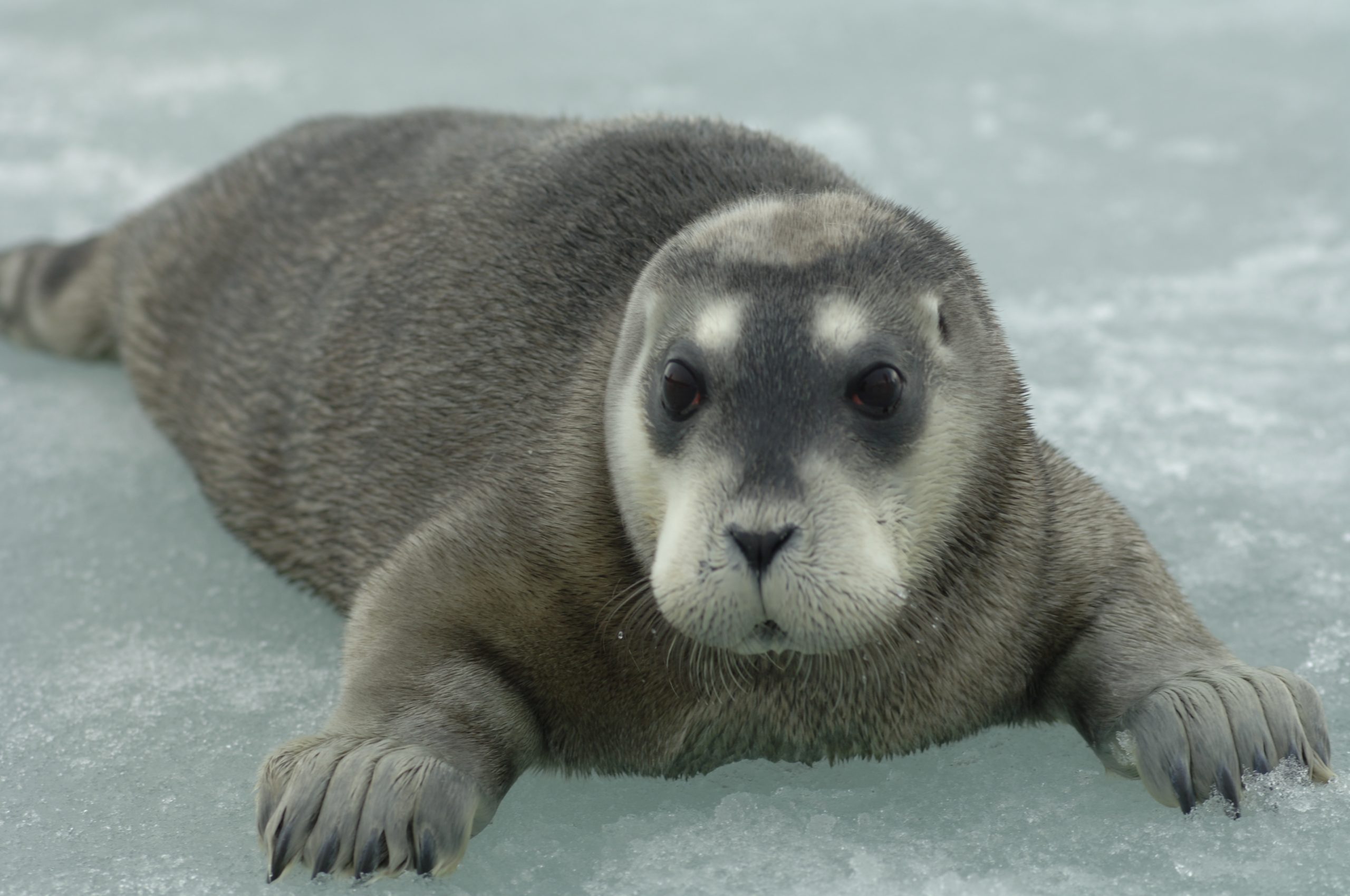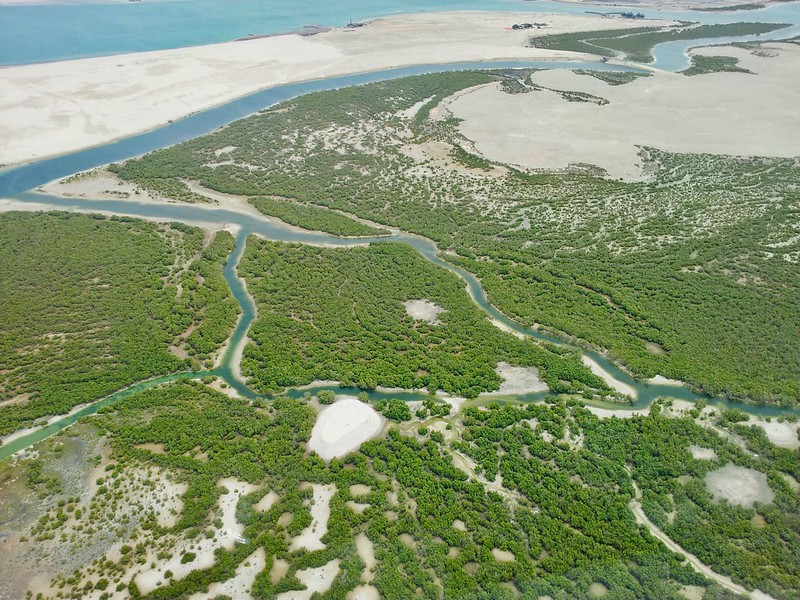At the 44th meeting of the Standing Committee of the Bern Convention in December in Strasbourg, the contracting parties decided to move the wolf (Canis lupus) from Appendix II (strictly protected) to Appendix III (protected). This decision may potentially have long-term implications on the conservation status and management of wolf populations in Europe.
Related content
Primary tools and resources
IUCN guidelines for gathering of fishers’ knowledge for policy development and applied use
Small-scale fisheries provide food security, livelihoods and income to millions of people but their management still presents a challenge to managers and other stakeholders due to problems in gathering suitable information and its incorporation in fisheries policy. Fishers are a key source of knowledge for assessment of both extractive capacity and value in small-scale fisheries, in addition to providing a broad array of cultural knowledge. The increasing recognition of the value of incorporating traditional fishing knowledge in freshwater, riverine, lacustrine and coastal and marine fisheries management is now evident in international conventions and published literature. The purpose of these guidelines is to make it easier for users to recognise and include fishers’ knowledge as an important data stream in resource management. The report includes details on the breadth of knowledge that can be gathered, how it can be gathered, and how this information can be applied to support sustainable fisheries policy and broader applications in society. It contains case studies from Africa, Asia, the Caribbean, Central and South America, and the Pacific.
The Sustainable Food Systems Programme
The One Planet Network’s Sustainable Food System (SFS) Programme contributes to a transformation towards sustainable food systems that was called for at the UN Food Systems Summit in 2021. The SFS Programme is a partnership focused on urgent transformation towards sustainable food systems as a critical strategy to achieve the Sustainable Development Goals.
The SFS Programme has four objectives and five cross-cutting themes to support its goal of accelerating the shift to sustainable food systems. The Programme has developed a range of tools to providing guidance for the transformation to sustainable food systems.
IPBES Thematic Assessment Report on Invasive Alien Species and their Control
The IPBES Thematic Assessment of Invasive Alien Species and their Control was adopted in September 2023 and synthesizes information from over 13,000 references on IAS into a comprehensive scientific assessment and a concise summary document for policy makers. The assessment assesses the current status and trends of invasive alien species, their impacts, drivers, management, and policy options to address the challenges they pose. It results from four years of work by experts from 49 countries.
The Rufford Foundation
The Rufford Foundation is a UK registered charity which funds nature conservation projects across the developing world.
The flagship Rufford Small Grants Programme gives funding to individuals working in developing countries who are starting on the ladder of conservation research and establishing pilot programmes. In some cases, if their work progresses well, these individuals may apply for one of the further grants from the Foundation. Since the Rufford Small Grants Programme was set up over 20 years ago, it has given in excess of £30 million through more than 5100 grants to projects in over 150 countries. The programme identifies scientists at the very early stages of their careers and provides targeted support to enable them to achieve their goal of making a difference in terms of conservation. Many recipients have gone on to be key influencers at a national and sometimes global level
UNESCO Man and the Biosphere (MAB) programme
UNESCO Man and the Biosphere (MAB) is an intergovernmental programme that aims to establish a scientific basis for enhancing the relationship between people and their environments. The World Network of Biosphere Reserves is an interactive network of sites of excellence that foster harmony between people and nature for sustainable development, respect for cultural values, and society’s ability to cope with change. There are 748 biosphere reserves in 134 countries, including 23 transboundary sites. Sites can be proposed by all Member States and Associate Members of UNESCO. Biosphere reserves are nominated by national governments and designated under the intergovernmental MAB Programme following the decisions of the MAB International Coordinating Council.
How to use
To obtain further information on the MAB programme and existing MAB sites, or to download the Requirements and Nomination forms, visit: https://en.unesco.org/biosphere
Guidance on other effective area-based conservation measures (OECMs)
The Kunming-Montreal Global Biodiversity Framework, adopted in 2022, provides a framework for the effective implementation of the Convention on Biological Diversity (CBD) through four goals and 23 targets. Target 3 (known as the ‘30×30 target’) calls on Parties to conserve at least 30% of terrestrial, inland waters, and coastal and marine areas by 2030. These guidelines are designed to promote good practices relating to identifying, reporting, monitoring and strengthening OECMs. They are intended for use by a wide range of rightsholders and stakeholders to promote understanding of whether a site meets the CBD criteria for identifying an OECM, how to report OECM data at the national and global levels, and how to monitor and strengthen OECMs.
BIOFIN The Nature of Subsidies: A step-by-step guide to repurpose subsidies harmful to biodiversity and improve their impacts on people and nature
The Biodiversity Finance Initiative (BIOFIN) of United Nations Development Programme (UNDP) has developed this guide to assist countries in assessing to what extent government subsidies are having harmful impacts on biodiversity, and to create action plans to repurpose them to become more nature-positive and enhance positive impacts for both people and nature. The BIOFIN Catalogue of Financing Solutions summarizes over 150 possible financing mechanisms to help countries understand which financing mechanisms are already used around the world. Countries can use this Catalogue to determine priorities for their national biodiversity finance plan.
How to use
The step-by-step guide can be downloaded at:
Further information on BIOFIN and the Catalogue of Financing Solutions are available at:
CBD voluntary guidelines on Traditional Knowledge and ILPCs
The UN Convention on Biodiversity has developed sets of detailed guidance on ILK. These include the Tkarihwaié:ri Code of Ethical Conduct to Ensure Respect for the Cultural and Intellectual Heritage of Indigenous and Local Communities Relevant to the Conservation and Sustainable Use of Biological Diversity; the Mo’otz Kuxtal Voluntary Guidelines for the development of mechanisms, legislation or other appropriate initiatives to ensure the “prior and informed consent”; and The Rutzolijirisaxik Voluntary Guidelines for the Repatriation of Traditional Knowledge of Indigenous Peoples and Local Communities Relevant for the Conservation and Sustainable Use of Biological Diversity
The IUCN Urban Alliance
The Urban Alliance is a diverse global coalition of international partners committed to bringing cities into balance with nature. Several resources are available including an IUCN briefing paper, the Urban Nature Indexes: methodological framework and key indicators, and the IUCN Urban Toolbox. This is a catalogue of IUCN knowledge products on urban biodiversity that provides guidance to subnational governments, municipalities, and urban professionals on nature-positive development in urban environments. The tools featured support assessment, planning, design, implementation, and monitoring.
How to use
- Information on The Urban Alliance can be accessed at: https://iucnurbanalliance.org
- The Briefing paper on Cities and Nature can be downloaded at: https://www.iucn.org/resources/issues-brief/cities-and-nature
- The Urban Nature Indexes: methodological framework and key indicators can be downloaded at: https://portals.iucn.org/library/node/50782
- The IUCN Urban Toolbox is available in English, French and Spanish at: https://iucnurbanalliance.org/iucn-urban-toolbox-released-in-english-french-and-spanish/
A global register of competences for threatened species recovery practitioners
Competence frameworks are widely used in many professional sectors, helping to develop capacity by defining and recognising the required skills, knowledge and personal attributes. Registers of competences have been developed within the conservation sector. A global register of competences for threatened species recovery practitioners is a register of competences in the form of a directory of the possible skills, knowledge and personal attributes required by practitioners working in threatened species recovery programmes around the world, in both in-situ and ex-situ contexts. This register has the potential to transform approaches to capacity development within threatened species recovery and help improve the effectiveness of this branch of conservation. Its structure largely follows that of A global register of competences for protected area practitioners (Appleton, 2016).
Forest Stewardship Council certification
The Forest Stewardship Council (FSC) has 10 principles that are relevant to different kinds of forest ecosystems and in diverse cultural, political, and legal settings. These require management of certified forests to be legal, maintain or improve the social and economic well-being of workers and local communities; uphold the rights of Indigenous Peoples; maintain, conserve, or restore the ecosystem services and environmental values of managed forests; establish a management plan; and maintain or improve high conservation values. The FSC label verifies sustainable sourcing of products from the forest to store shelves.
How to use
Complete descriptions of the FSC principles, criteria, and certification can be accessed and downloaded at: https://connect.fsc.org/document-centre/documents/resource/392
To register for the FSC newsletter: https://fsc.org
Ramsar Wetland Sites of International Importance
A Ramsar site is a wetland designated to be of international importance under the Ramsar Convention (The Convention on Wetlands). The convention provides for national action and international cooperation on the conservation and sustainable use of wetlands. Sites are identified according to any one of nine criteria. The Ramsar Classification System for Wetland Types has been developed by the Ramsar Convention. There are currently more than 2,400 Ramsar Sites around the world, covering over 2.5 million km2. The Ramsar Sites Information Service (RSIS) provides online information on wetlands that have been designated as internationally important.
How to use
- For further information on the Convention visit: https://www.ramsar.org
- For an overview of the Ramsar Sites network or to obtain information on a specific Site, visit
- https://rsis.ramsar.org/
- The Administrative Authority of a Contracting Party can submit or update Ramsar Site information using the new online RIS by logging in or registering – instructions at: https://rsis.ramsar.org/sites/all/modules/custom/rsiswp_main/data/RSIS_Instructions_E.pdf
The Species Conservation Toolkit Initiative (SCTI)
SCTI is a partnership initiative between several NGOs and ex situ organizations to ensure that new innovations and tools needed for species risk assessment, conservation planning, and population management are developed, globally available, and used effectively. SCTI combines expertise in population biology, computer programming, and planning to build modelling tools essential to guide conservation actions for threatened species in the wild, to facilitate the intensive management of species in ex situ programmes, and to integrate conservation efforts across all types of management approaches.
UN Decade on Ecosystem Restoration 2021-2030
The UN Decade on Ecosystem Restoration 2021-2030 is a global call to action, drawing together political support, scientific research, and finance to massively scale up restoration of terrestrial, coastal, and marine ecosystems. It is led by the United Nations Environment Programme (UNEP) and the Food and Agriculture Organization of the United Nations (FAO), working with other partners. The website contains a, social media cards, sample messaging, and an animated visual identity designed for users to use or modify according to their needs.
How to use
To obtain information: https://www.decadeonrestoration.org/charting-course-global-restoration
To contribute to the UN Decade: https://www.decadeonrestoration.org/join-movement
UNDP BIOFIN Initiative
BIOFIN was initiated ten years ago at CBD COP 11 by the United Nations Development Program (UNDP) and the European Commission in response to the urgent global need to divert more finance from all possible sources towards global and national biodiversity goals. BIOFIN demonstrates how nature-positive economies can work for people and the planet. Now present in 40 countries, BIOFIN is working with governments, civil-society, vulnerable communities, and the private sector to catalyse investments in nature protect and promote biodiversity. The BIOFIN Report: How Can Biodiversity Finance Plans Support NBSAPs? assists countries to develop, update, and implement national Biodiversity Finance Plans (BFPs) in support of their National Biodiversity Strategy and Action Plan (NBSAP).
BIOFIN does not provide funds directly. However, BIOFIN has partnered with several other organisations to set up the Finance Resources for Biodiversity (FIRE) platform to collate funding sources for all types of biodiversity projects, including for species. Over 300 funding opportunities for biodiversity conservation, both public and private, are listed. FIRE functions as a one-stop-shop, where a project leader can find a multitude of different opportunities matching specific criteria (country, range of funding, type of entity, etc.). Sources can be sorted using filters. Within the “ecosystems” filter there is an option to select Wildlife / Endangered Species.
How to use
Information on BIOFIN can be accessed at: https://www.biofin.org/
The BIOFIN brochure can be downloaded at: https://www.biofin.org/knowledge-product/biofin-brochure-0
The Report: How Can Biodiversity Finance Plans Support NBSAPs? can be downloaded at: https://www.biofin.org/knowledge-product/how-can-biodiversity-finance-plans-support-nbsaps
The FIRE platform can be accessed at: https://fire.biofin.org/
To obtain information on funding resources for species use the link: https://fire.biofin.org/?ecosystems=Wildlife++Endangered+Species&name=
IUCN SSC Invasive Species Specialist Group (ISSG)
The ISSG is a network of global species on IAS. It facilitates the exchange of information and knowledge on IAS across the world and promotes linkages between knowledge, practice and policy to inform decision-making. The two core activity areas of the ISSG are policy and technical advice, and information exchange through online resources and tools and networking. ISSG is currently working with partners on a global initiative, the Global Register of Introduced and Invasive Species (GRIIS) (site is under development), which is aimed at developing national-level validated, and annotated inventories of IAS. ISSG is also working with partners on to develop a prototype online resource IAS pathway management – the Invasive Alien Species Pathway Management Resource. It will include information on IAS pathways and legal information related to the management of specific pathways.
International Whaling Commission (IWC) programmes on ocean noise
Anthropogenic ocean noise is identified as one of the priority threats in the Strategic Plan of the IWC Conservation Committee. In 2018, the IWC agreed a Resolution that recognised the increasing concern over ocean noise, and clarified next steps to better understand and manage the threat. In 2022 the IWC endorsed a Workplan on Anthropogenic Ocean Noise. The Scientific Committee is also undertaking research on the impact of noise on cetaceans, and the effectiveness of different approaches to reduce exposure.
Integrated Biodiversity Assessment Tool (IBAT)
IBAT is a biodiversity impact assessment tool that enables companies and other users to screen the potential risks to biodiversity and key sites from proposed development. IBAT is
based on three global datasets, the IUCN Red List of Threatened Species, World Database on Protected Areas, and World Database of Key Biodiversity Areas]. IBAT provides data, tools, and guidance to assist organisations in acting on biodiversity-related risks and opportunities, and provide sustainable funding to support biodiversity datasets. IBAT has a GIS download service which is available through five plans, ranging from free to USD 35,000 /year, according to the level of access required. Data can be downloaded at global level or at more local levels. Biodiversity data reports can be generated as a pdf document, or as raw data in CSV format, and/or map files. IBAT report templates include a simple proximity report, a World Bank Group risk report, and a freshwater report.
Encyclopedia of Life
The Encyclopedia of Life (EoL) aims to provide global access to knowledge about life on Earth by collecting and sharing knowledge in an open, freely accessible digital resource. EoL identifies sources of biodiversity knowledge that are legally and practically shareable and enriches their structure with modern data tools to integrate them with other data.
EoL works with open access biodiversity knowledge providers around the world, including museums and libraries, universities and research centers, individual scientists, graduate students and citizen science communities, and a suite of international open data hubs. EOL receive information from many sources, and format and annotate it so that search tools can find similar content from different sources.
Global invasive species database (GISD)
The Global Invasive Species Database (GISD) is a free source of information about invasive alien species. It covers all taxonomic groups from micro-organisms to animals and plants, in all ecosystems. The GISD aims to increase public awareness about introduced species that negatively impact biodiversity, and to facilitate effective prevention and management activities by providing easy access to authoritative invasive species information.
EDGE Protected And Conserved Area Fund
The EDGE of Existence programme was the first global conservation initiative to focus specifically on threatened species that represent a significant amount of unique evolutionary history.
Using a scientific framework to identify the world’s most Evolutionarily Distinct and Globally Endangered (EDGE) species, the EDGE of Existence programme highlights and protects some of the most unique, extraordinary, and overlooked species on the planet. EDGE species have few close relatives on the Tree of Life and are often extremely unusual in the way they look, live and behave, as well as in their genetic makeup. They represent a unique and irreplaceable part of the world’s natural heritage, yet an alarming proportion are on the verge of extinction.
To safeguard these species, we are committed to supporting, strengthening, and diversifying conservation leadership in critical regions. The EDGE Fellowship exemplifies this commitment. It is a 28-month fellowship for local early-career conservationists from lower- and middle-income countries. We equip these emerging leaders—EDGE Fellows—with the knowledge, skills, and opportunities required to advance their careers and spearhead effective conservation efforts for the world’s most unique and extraordinary species.
The extinction of species is a call to action for all of us, and we stand ready to answer that call and contribute to a healthier and vibrant planet for all species.
Guidelines for wildlife disease risk analysis
This IUCN-OIE publication provides an overview of the science-based processes and tools available for wildlife disease risk analysis and their application to a broad range of contemporary issues, including human-wildlife interactions, domestic animal-wildlife interactions and the impacts of massive ecological change on biodiversity conservation. The guidelines will be of value to those policy makers and decision makers faced with the social, political and technical complexities involved in wildlife-disease-associated scenarios.This is a companion volume to the Manual of Procedures for Wildlife Disease Risk Analysis.
The IUCN Urban Alliance
The Urban Alliance is a diverse global coalition of international partners committed to bringing cities into balance with nature. Several resources are available including an IUCN briefing paper, the Urban Nature Indexes: methodological framework and key indicators, and the IUCN Urban Toolbox. This is a catalogue of IUCN knowledge products on urban biodiversity that provides guidance to subnational governments, municipalities, and urban professionals on nature-positive development in urban environments. The tools featured support assessment, planning, design, implementation, and monitoring.
How to use
- Information on The Urban Alliance can be accessed at: https://iucnurbanalliance.org
- The Briefing paper on Cities and Nature can be downloaded at: https://www.iucn.org/resources/issues-brief/cities-and-nature
- The Urban Nature Indexes: methodological framework and key indicators can be downloaded at: https://portals.iucn.org/library/node/50782
- The IUCN Urban Toolbox is available in English, French and Spanish at: https://iucnurbanalliance.org/iucn-urban-toolbox-released-in-english-french-and-spanish/


